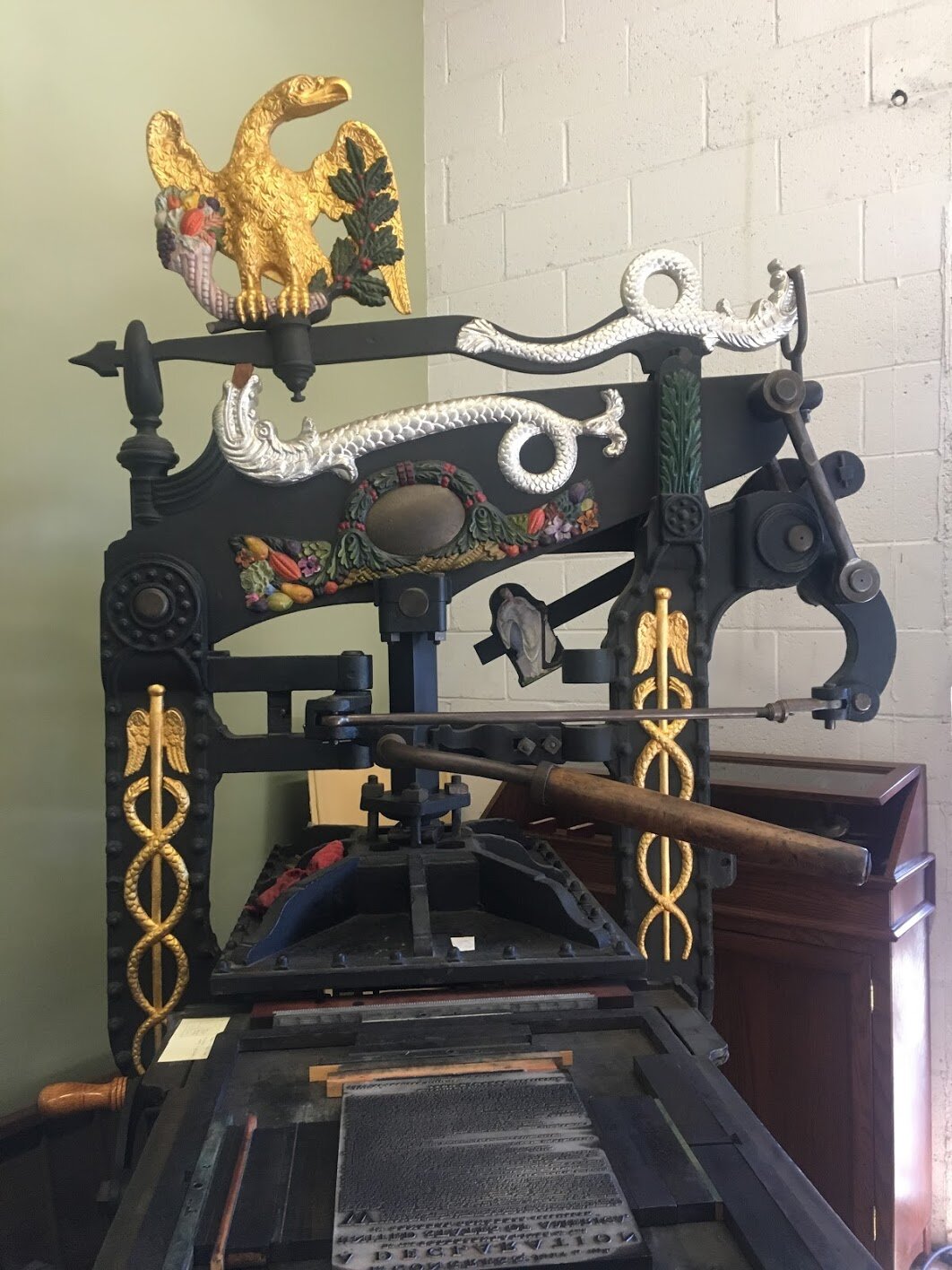1824 COLUMBIAN PRESS
The Columbian Press was the first metal press in America. It was invented in 1813 by an American named George Clymer in Philadelphia. Clymer’s patriotism is apparent in the distinctly American symbols he chose to adorn this press, such as the bald eagle, the cornucopia, and Lady Columbia, gem of the ocean. The decorative symbols on the press also represent the functionality of the press. The caduceus, which is often associated with the field of medicine, is the staff of Hermes, the messenger of the Ancient Greek Gods. This related to the use of the press to share information and further communication. The silver creatures at the top of the press, which might at first glance appear to be dragons or serpents, are actually dolphins to represent knowledge. Dolphins also have a connection to the early printer, Aldus Manutius, who used the symbol in his publications.
This press never garnered much popularity in the United States, as it was too heavy to transport. In 1813, Americans were moving westward towards frontier states and were more inclined to bring a lighter, wooden press with them during their travels. Wooden presses were also a more affordable option for printers at the time. So in 1818, Clymer took his press to England, which was considered the center of the world at the time. The more attractive Columbian Press knocked the existing English metal press, the pragmatic Stanhope, off the market in England. Ironically, this was only a few years after the war of 1812, when American nationalism would not have been very popular in Britain. Despite this, the Columbian was manufactured in England for over 100 years with an American bald eagle flying above it.
The Museum is home to not one but three Columbian Presses. Two colorful versions of the press come from Ernie Lindner’s collection and are dated as 1824 and 1838. The 1824 press was restored by Vance Gerry, who gave it a fresh coat of paint, and Ernie’s wife, Harriet Lindner, who applied gold and silver leaf to the gilded areas.
In the past year, the Museum acquired a Frederick Ullmer Standard Columbian. Although it has identical decorative elements to the 1924 and 1938 Columbians, it does not have the same colorful palette. It is instead entirely black and gold.







